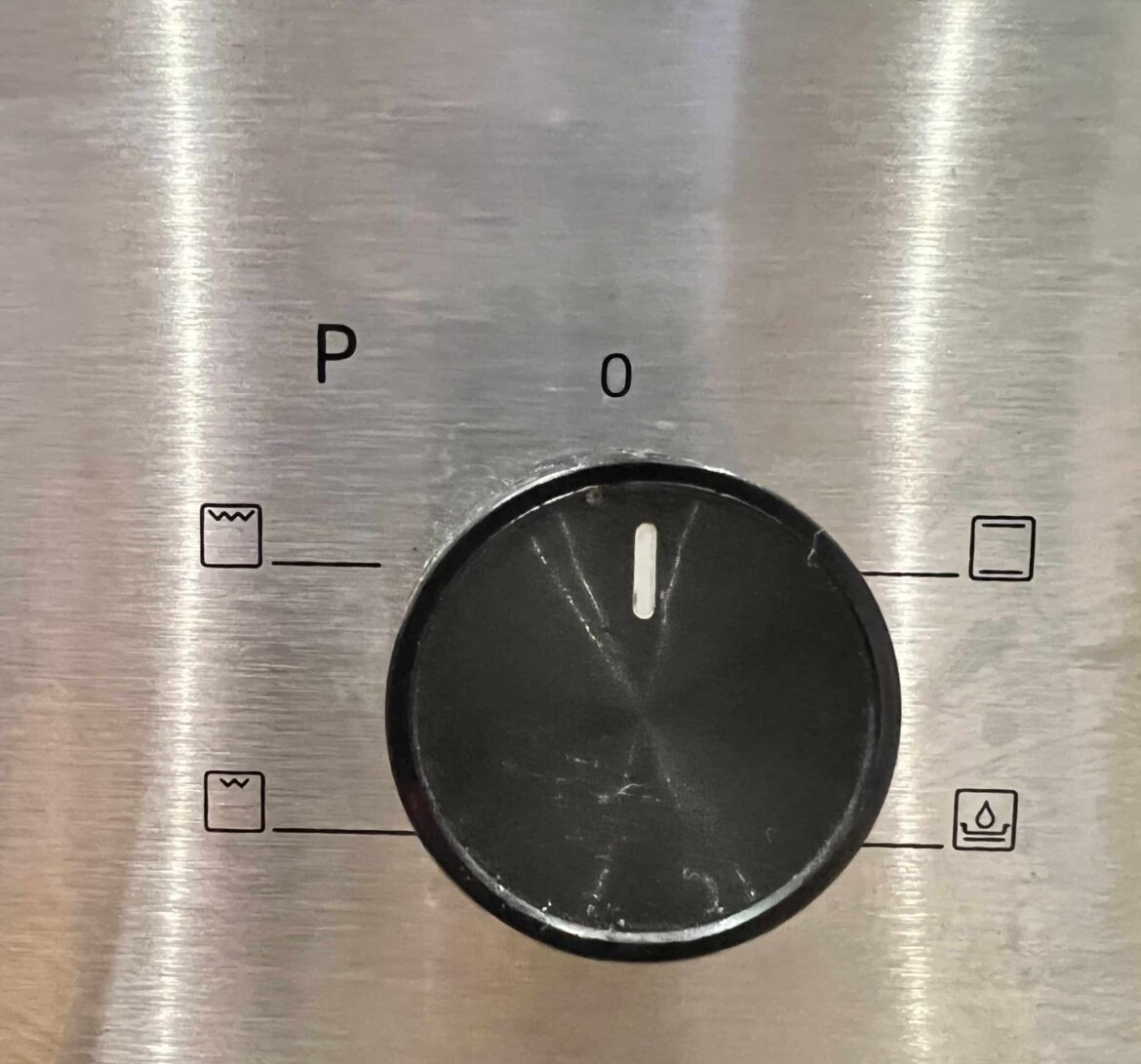The symbols on your oven can be confusing at first glance, but don’t worry – they’re actually quite easy to understand.
Oven symbols: What the top/bottom heat settings mean
You can use the controls on your oven to set both the temperature and the setting. Both are important for ensuring that your oven-baked dishes turn out well.
- The top/bottom heat setting causes heat to be applied to the food from both above and below.
- Each of the symbols on the control knob is often located in a small square that represents the oven.
- The symbol for top/bottom heat is a bar at the top of the square and a bar at the bottom.
- There is also top heat only or bottom heat only. These are then represented by a single bar.
- Top heat is ideal for gratinating (e.g. gratins), while bottom heat ensures crispy bases (e.g. pizzas or fruit cakes).
- If a recipe does not specify an oven setting, it usually means top/bottom heat.
- Use this setting if you are only using one baking tray, as otherwise the heat will be distributed unevenly.
- Top/bottom heat is particularly suitable for: Delicate dishes, baked goods, and meat.
The convection function
The convection function is another popular oven setting after top/bottom heat.
- The fan-assisted function adds a fan to the top/bottom function, which circulates the hot air inside the oven.
- The symbol for convection is the fan or the top/bottom heat symbol in combination with the fan.
- Use the convection function if you have food on several trays and need even heat.
- Convection usually saves ~20°C compared to top/bottom heat, but can dry out dishes more easily. If necessary, you can add a little liquid to moist dishes.
The hot air function
Hot air and convection are similar, but do not confuse the symbols.
- The hot air function also has a fan symbol. However, this is inside a circle.
- Hot air distributes heat even better and faster than convection, as it uses an additional heating element to heat the air, eliminating the need for preheating.
- This heating element is located on the back wall of the oven and is symbolized by the circle.
- However, make sure that your dish is actually suitable for cooking with hot air, as not all dishes are designed for this.
- Like the convection function, the hot air function is useful when you are using several trays and need even heat in the oven.
Other possible symbols & functions on your oven
In addition to the standard functions, there are many other features, but the symbols for these may vary slightly from manufacturer to manufacturer.
- Grill function: Usually a jagged line in the upper part of the oven. This stands for strong top heat, for example for grilling or gratinating. Some appliances have different symbols for different types of grilling: A jagged line often stands for the standard grill. Two jagged lines or larger jagged lines may indicate a more intense grill setting or a larger grill surface.
- You can also find the grill function in combination with the convection setting. Again, the purpose here is to distribute the heat more evenly. The grill function ensures crispy layers, but does not usually replace a normal grill.
- Steam cooking (three waves or clouds): Gentle cooking with steam – ideal for vegetables or bread.
- Defrosting (snowflake or drop): Mild temperature, ideal for defrosting without cooking.
- Rapid heating: Lightning-fast preheating, indicated by flames or a rapid icon – saves waiting time.
- Pyrolysis: A type of oven cleaning in which the oven is heated to such a high temperature that old residues burn off and can then be wiped away with a cloth. You will need to check your operating instructions for the symbol, as there is no standard symbol for this.
- Hydrolysis: Low-temperature cleaning with water and, if necessary, detergent – also used to remove dirt.
- In addition, many modern ovens automatically lower the temperature in the final phase, switch off earlier, or use more efficient cycles to save energy.
- In addition, newer ovens often have automatic programs, which are predefined programs (e.g., “chicken,” “cake”) with symbols – these simplify preparation, but are usually manufacturer-specific.
Modern ovens and international differences
In addition to ovens with controls, there are now also ovens with touch displays and digital displays. In this case, the symbols appear as touch icons, often supplemented by a timer display, temperature, remaining time, and child safety lock.
- The symbols change on many new ovens, especially those with touch controls or digital displays. The classic symbols (such as fan or lines) often remain, but may be displayed differently on the display – e.g., as colored icons or minimalist symbols.
- Please note: If your oven has a touch display or digital controls, we recommend that you familiarize yourself with the menu. Symbols can vary greatly from manufacturer to manufacturer or may not be visible on the appliance – often, the only solution is to consult the operating instructions.
- Most oven symbols are very similar internationally, as many manufacturers adhere to common standards. However, depending on the region or manufacturer, there may be slight variations in the design or labeling of symbols, especially on appliances from the US or Asia.
- Even if the symbols are the same, their meaning may vary slightly, which is why the operating instructions are important, especially for imported appliances.

